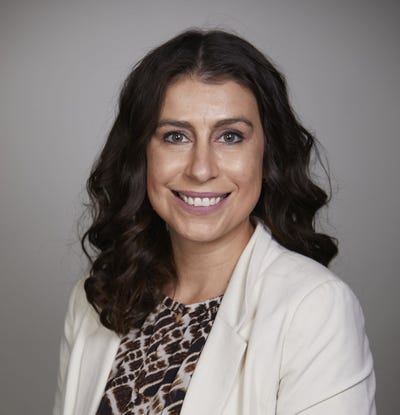Beginning in 2010, the U.S. Supreme Court has issued a series of decisions that restrict the scope of what is patentable in the United States. These decisions limited the previously broad standard of “anything under the sun that is made by man" for patent eligibility.

Beginning in 2010, the U.S. Supreme Court (Court) has issued a series of decisions that restrict the scope of what is patentable in the United States. These decisions limited the previously broad standard of “anything under the sun that is made by man" for patent eligibility (Diamond v. Chakrabarty, 447 U.S. 303, 309 [1980]). In Ass’n for Med. Pathology v. Myriad Genetics Inc., the Court held that isolated naturally occurring DNA sequences were unpatentable “products of nature," thereby overturning decades of U.S.P.T.O. (U.S. Patent and Trademark Office) practice (133 S.Ct. 2107, 2116 [2013]).
In Mayo Collaborative Servs. v. Prometheus Labs. Inc., the Court held that a patent applying “natural laws" of a relationship between drug metabolites in the blood for the purpose of a diagnostic method did not transform the unpatentable natural laws into patent-eligible applications of those laws (132 S.Ct. 1289, 1294 [2012]). Taken together, the Court has presented a threshold test for patentability of all inventions:
1. Is the patent directed to a “law of nature," “natural phenomena," or “abstract idea?"; and, if so,
2. Does the patent amount to “significantly more" than the “law of nature," “natural phenomena," or “abstract idea" itself? (Alice Corp. v. CLS Bank Intl., 134 S.Ct. 2347, 2354 [2014]).
This threshold test now applies to any patent application that is directed to a product, manufacturing process, or method of use that arguably incorporates any “natural" aspect to it, and has been aggressively applied by the U.S.P.T.O. in rejecting patent applications.
U.S.P.T.O. Guidelines and Practice
The U.S.P.T.O. has issued a series of interim guidance, most recently in December 16, 2014, for determining subject matter eligibility of patent applications under this new legal paradigm (2014 Interim Guidance on Patent Subject Matter Eligibility, 79 Fed. Reg. 74,619 [December 16, 2014]). In addition to this guidance, the U.S.P.T.O. has provided a series of examples for patent examiners related to “Nature-based Products." This material shows that the U.S.P.T.O. is taking an expansive view on what falls under the extra scrutiny of a “natural product" or a “law of nature," and that the burden will be on the patent applicant to overcome this new threshold. Natural products may include chemicals derived from natural sources (e.g., extracts), foods, minerals, organisms (bacteria and plants), and proteins and peptides (Biotechnology/Chemical/Pharmaceutical Customer Partnership Meeting: Evaluating Subject Matter Eligibility under 35 U.S.C.). In order to successfully obtain a patent on an innovation in these fields, an applicant must be ready to show that the product is markedly different from what exists in nature, or that the patent adds significantly more to the natural product (BCPCP Meeting p. 31). So what exactly does “markedly different" or “significantly more" mean?
Strategies for successful patenting
Natural product companies must be proactive in addressing the new eligibility threshold. In particular, they must be ready to explain how their invention is markedly different from what exists in nature or how their invention adds significantly more to the natural product. Markedly different characteristics can be shown by a comparison of the nature-based product to its naturally occurring counterpart in its natural state (2014 Interim Guidance on Patent Subject Matter Eligibility, 79 Fed. Reg. 74,623). The difference can be in biological or pharmacological function or activity; chemical or physical properties; phenotype; and/or structure or form (Id.). If a markedly different characteristic is shown, the invention is not directed to a product of nature and may be patent eligible (Id.)
If a marked difference cannot be shown, the patent applicant may also attempt to show that the additional elements required by the patent application amount to significantly more than the natural product or process itself (Id. at 74,5624). In order to be significantly more, the additional elements or steps must impose meaningful limitations on the patent scope, must add a feature that is more than purely conventional or routine, and may include a particular transformation of the material (Id.). This will likely be a very difficult standard to meet. Therefore, the goal for any natural product applicant should be to establish that its invention is markedly different from the natural counterpart. These differences in structure, function, properties, or form can be established in the patent application itself or by expert declarations submitted to the U.S.P.T.O.
The U.S.P.T.O. has further provided a list of ten examples of nature-based products that can be a useful guide for meeting the markedly different requirement. Several are particularly relevant to nutraceutical and nutritional supplement inventions, and are instructive for patent application strategy. One example shows how the combination of a natural juice with an added preservative is characterized by the markedly different property of slower spoiling as compared to the juice in nature. Likewise, while a purified active ingredient isolated from nature is non-eligible, structural modifications to the chemical compound, compositions containing the active ingredient, and methods of improving health by administering the active ingredient may all be patent eligible. In the food example, a marked difference is obtained by mixing two natural probiotics, which are not normally combined in nature, with a yogurt to obtain a fermented yogurt having a lower fat content. However, a broader patent that does not specify the combination of natural products and covers a kit containing each probiotic individually would not provide the same functional difference and would not be eligible.
While the burden on the patent applicant has increased, a proactive approach can still provide a successful outcome in patenting innovative natural products.
Andreas Baltatzis is a director at the intellectual property boutique firm of Kramer & Amado PC. He represents a number of innovative nutritional supplement and nutraceutical companies who are improving people’s lives on a daily basis. He helps companies prepare and implement intellectual property strategies by obtaining patents and trademarks that protect their innovations, as well as advising clients on launching products while respecting others’ intellectual property.
About the Author(s)
You May Also Like






.png?width=800&auto=webp&quality=80&disable=upscale)